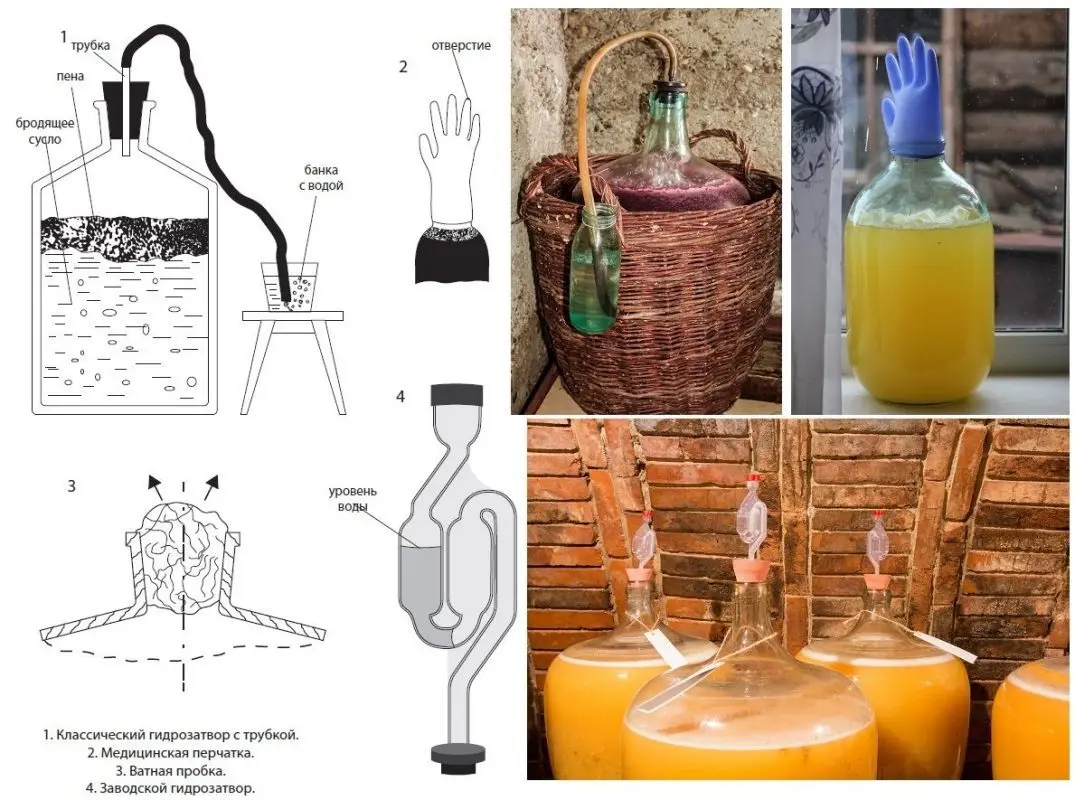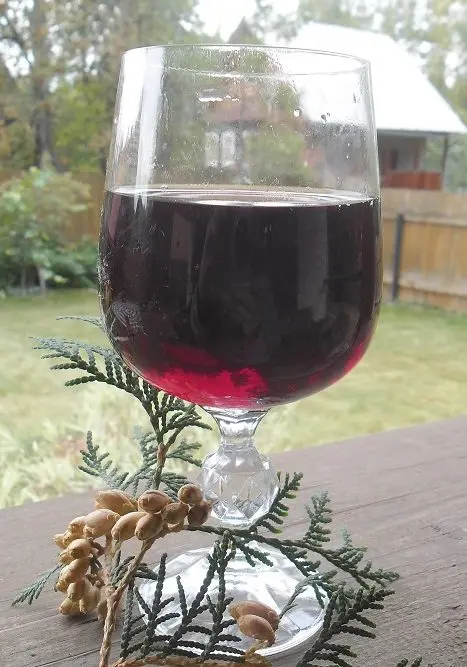Irga is a shrub growing in the southern regions of Russia, its berries resemble black currants. If you don’t know how to process the harvested crop of these low-juicy fruits, I suggest making wine from shadberry at home. It turns out quite a tasty drink with a light aroma of the feedstock. We will consider the correct cooking technology and recipe further.
Only ripe and overripe irga without signs of spoilage, rot and mold is suitable for winemaking. The berries must be carefully sorted out, removing the defective ones. The taste of the wine depends on the careful selection. Used containers should be sterilized with steam, then wiped dry with a clean cloth. The main problem is that the irga does not give juice well, therefore, heat treatment of the fruit is required first.
Ingredients:
- berries of irgi – 3 kg;
- sugar – 400-500 grams per liter of juice;
- water – 1 liter per liter of juice;
- unwashed raisins – 50 grams.
Raisins are needed as a safety net as a source of wild yeast, in case the high temperature kills the yeast on the skin of the shadberry. The amount of sugar depends on how sweet the wine needs to be. At first, I advise you to add as in the recipe, and sweeten to taste after fermentation.
Irgi wine recipe
1. Grind the berries in any way possible, heat in an enamel pan to a temperature of 50-60 ° C, turn off the heat, cover the pan with a lid. Squeeze out the juice after a day. The easiest way to do this is through several layers of gauze. The cake can be thrown away, it is no longer needed.
2. Dilute irgi juice with water in equal proportions, add raisins and sugar at the rate of 200 grams per 1 liter of juice (water is not taken into account). Stir the resulting wort until the sugar dissolves and pour into a fermentation container, such as a jar or bottle. Fill to a maximum of 75% of the volume to leave room for foam and carbon dioxide.
3. Install a water seal of any design or a medical glove with a hole in one finger on the container (pierce with a needle). Transfer the must to a dark warm place (18-26°C) or cover. A day or earlier, signs of fermentation will appear: foam on the surface, bubbles from the water seal (the glove will inflate). This means that the process is running normally.

After 4 days, add a new portion of sugar (100 grams per 1 liter of initial juice without water). It is necessary to open the container, separately drain half the wort than it is planned to add sugar, mix both ingredients, pour the resulting syrup back into the wine and close it with a water seal. After 5 days, repeat the procedure by adding another portion of sugar (100 grams / liter of pure juice).
Depending on the temperature and yeast activity, homemade wine from shadberry ferments for 20-60 days.
If fermentation lasts longer than 50 days, the wine must be carefully drained from the sediment, then put back under the water seal for further fermentation, otherwise a bitter aftertaste may appear.
4. After the end of active fermentation (the water seal does not blow bubbles or the glove is blown off, sediment has appeared at the bottom, the drink has become lighter), pour the wine through a straw into a clean container, without touching the sediment at the bottom.
You can taste it, you can sweeten it with sugar (at your discretion) or fix it with vodka (alcohol) – 2-15% of the volume. Fortified wine keeps better, but loses some of the flavor.
Fill storage containers with young wine to the top (preferably to exclude contact with oxygen), tightly cork and place in a dark, cool (6-16 ° C) place for 3-6 months for maturation, which significantly improves the quality of the wine.
The first 2-4 months, first every 20-25 days, then less often as a layer of sediment 2-4 cm appears, filter the drink by pouring it through a straw. After maturation, the wine can be bottled and hermetically sealed.

With full observance of the technology of preparation and storage in the cellar (refrigerator), homemade wine from shadberry does not deteriorate for up to 5 years. Fortress – 10-12%. The drink has a dark red color with a purple hue. The sweetness depends on the amount of added sugar, but in any case, there are notes of astringency in the taste, which are the hallmark of this wine.









